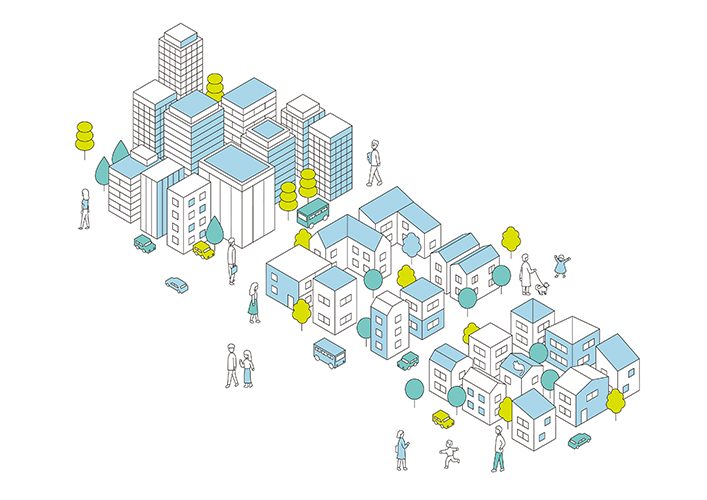Increasing Resiliency with Shared Energy Districts
Central energy plants drive efforts toward efficiency and decarbonization in the built environment.

Decarbonizing the built environment is more than a one-building-at-a-time job. To have the biggest impact, our industry must approach this work with a focus on the whole system across neighborhoods. We must look at what takes place both inside and outside of buildings: how we use energy, how energy resources are distributed, how buildings interact with the grid, how wastewater is eliminated, how all the resources can be shared and the mechanical components that create and store energy.
Shared energy districts, or ecodistricts, are evolving into real options for more building owners and communities to achieve long-term resiliency and efficiency at scale while offering a game-changing opportunity to integrate with utility providers. Ecodistricts offer a shared energy system that eliminates waste, accelerates decarbonization opportunities and changes how occupants interact with the built environment.
By leveraging smart-building technology, ecodistricts deliver energy — heating, cooling and power — exactly when and where it is needed. This localized, distributed network of generation, storage and thermal nodes delivers energy balance, decarbonization, improved air quality and resiliency. Communities can adapt to changing environmental conditions and buildings to participate in our energy future.
In an ecodistrict, buildings are more than standalone islands. Each is part of a greater ecosystem that thrives on give and take: first, with each other; second, with on-site/in-neighborhood energy sources; and last, with utility providers.
Unlike older system approaches, the ecodistrict design allows heating and cooling to be supplied through the same system and for the sharing of thermal energy between buildings. By using a variety of renewable energy sources, heating and cooling are provided to buildings through low-temperature energy loops shared by multiple facilities.
This means facilities can achieve an optimum temperature in each unique space, even within the same building. And since the ecodistrict is part of an energy-sharing model, the systems are more energy-efficient because they return and use ambient heating and cooling lost in a more traditional system.
Shared and interdependent energy infrastructure means lower costs and larger emissions reduction for more stakeholders. By partnering with the utility grid, building owners and communities can realize more balance and efficiency and achieve more equitable energy resources. With a shared energy system, an opportunity for an even bigger impact exists with energy recycling: one building’s waste is a service for another.
Through tailored design of distributed energy resource solutions, building owners will find actionable pathways and long-term planning to ensure they implement and achieve all their desired decarbonization, efficiency and resiliency goals.
Elements of an Ecodistrict
Centralized heating and cooling, thermal energy recovery and storage, and the ability to move it where it is needed.
• Microgrids, on-site generation and storage. Solar, microturbine, wind and other solutions put as much energy on-site where it is needed.
• Sensors, meters and data platforms that allow buildings and the grid to connect as one, working at scale and in partnership.
• Partnerships between developers, building owners, utility providers and within communities to ensure seamless communication between the building and the grid. All these entities benefit in many ways from an ecodistrict approach.
• Occupants who are educated on and encouraged to engage in behaviors that make the shared energy system as efficient and clean as possible.
With the rapid-fire development of technologies and the ever-growing engagement in decarbonization efforts by building owners and occupants, the time is here to consider more impactful, long-term solutions and systems that serve these stakeholders far into the future. High-performing, connected, intelligent building systems are more important — and necessary — than ever.
The human element has an impact on system design, too. People are growing more aware of the need to decarbonize, while at the same time, they demand comfortable, reliable and modern environments. They are also more engaged than ever and willing to do their part in this cycle. It falls to us to push shared energy strategies and capabilities to keep pace with evolving market demands — not to mention the global push for higher-performing systems that don’t necessitate a higher price tag.
Through collaborative partnerships with building owners, industry, utility providers and communities, we can transform buildings into active participants in the energy system that adapt autonomously and share and balance better with the community and system they are part of. The future of the built environment is more than a one-building-at-a-time job. Through a holistic, shared approach, we can reimagine what’s possible.
Megan Owen is a vice president at construction and energy services firm McKinstry. In this role, she leads enterprise market strategy in the company’s efforts to innovate waste and climate harm out of the built environment through the development of shared energy models to modernize and decarbonize it.




